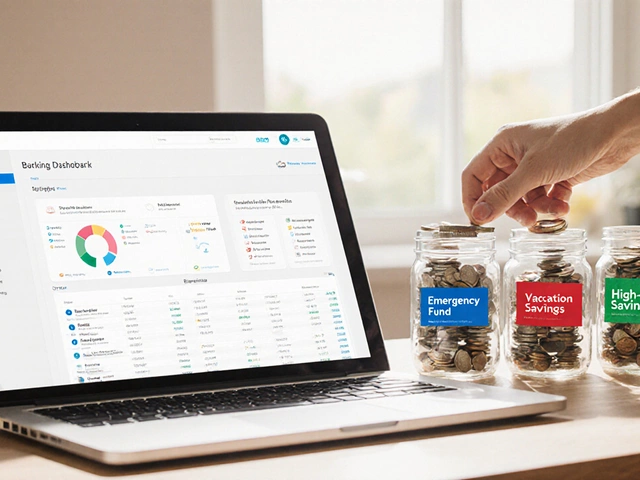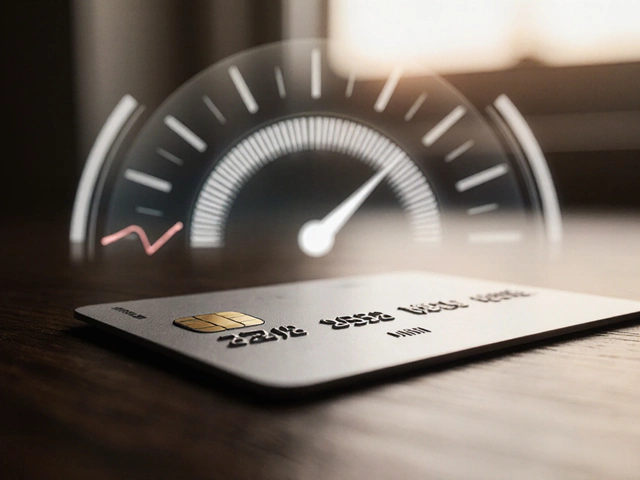
Miss a month on a gold loan and the lender can legally move toward auctioning your jewellery. That’s the hard edge of this product. The good news: repayment is simple once you know the options, the math, and the timelines.
Gold loan is a secured loan where you pledge gold jewellery or bullion as collateral to borrow cash, typically for 3-24 months, and repay via set structures (EMI, bullet, interest-only, or overdraft).
You’ll see four repayment styles in the market. Each changes how interest is calculated, when principal is due, and what it costs if you miss a due date. If you want the fastest answer, read the next section. If you want to truly protect your gold, read the full guide.
TL;DR
- Repayment comes in four styles: EMI, bullet (lump-sum), monthly interest-only, and overdraft (pay-as-you-use).
- Interest is usually simple interest for bullet/interest-only; EMI uses reducing balance. Cost depends on tenure and how fast you reduce principal.
- Pay on time via bank transfer, UPI, direct debit, or at branch. Enable autopay to avoid penal interest and auction triggers.
- Part-payment and early closure are allowed by many lenders; check fees before you sign.
- On sustained default, lenders issue a notice and may auction the pledged gold. Clear dues before auction to recover items.
What shapes how a gold loan is repaid?
Three levers decide your repayment path: the repayment structure, the interest calculation method, and the lender’s policy.
Repayment structure defines when you pay principal vs interest: monthly instalments (EMI), one-time principal (bullet), monthly interest with principal at maturity, or flexible drawdown (overdraft).
Interest calculation is how the lender computes what you owe: simple interest on outstanding principal, or reducing balance with amortisation.
Lender policy sets tenure, fees, part-payment rules, grace periods, and auction timelines. Banks are usually stricter but cheaper; NBFCs and pawnbrokers are more flexible but pricier.
Repayment structures explained (with real numbers)
Assume a loan amount of ₹2,00,000 at 15% per annum for 12 months. Collateral is 22K jewellery valued high enough under the lender’s Loan-to-Value (LTV) cap.
Equated Monthly Instalment (EMI) is a monthly payment that covers both interest and principal on a reducing balance until the loan closes.
- How it pays down: Each EMI reduces principal, so interest each month shrinks.
- Typical use: Banks and some NBFCs.
- Example: At 15% p.a., 12-month EMI is about ₹18,090. Total interest ≈ ₹17,080 if you stay on schedule.
Bullet repayment is where you pay interest periodically (monthly/quarterly) and repay the full principal in one shot at the end.
- How it pays down: Principal doesn’t reduce; you settle it at maturity.
- Typical use: NBFC/pawnbroker gold loans; convenient if you expect cash later.
- Example: Monthly interest = ₹2,500 (₹2,00,000 × 15% / 12). At month 12, pay ₹2,00,000 principal. Total interest ≈ ₹30,000.
Interest-only (with principal at end) is the same cash flow as bullet if you pay interest monthly and settle principal at maturity.
- How it pays down: Interest each month, principal at the end.
- Typical use: Many NBFCs.
- Example: Same as bullet: ₹2,500 per month, then ₹2,00,000 at maturity.
Gold overdraft (OD) is a credit line against gold where you draw, repay, and redraw within a sanctioned limit; interest accrues daily on the amount used.
- How it pays down: You can pay anytime; interest stops the moment you reduce the outstanding.
- Typical use: Traders, self-employed. Banks and NBFCs offer this.
- Example: Use ₹1,00,000 for 20 days at 15% p.a. Interest ≈ ₹822 (₹1,00,000 × 15% × 20/365).
Notice the trade-off: EMI reduces interest cost fastest; bullet/interest-only keeps cash flow light during the term but costs more; OD is cheapest if you repay quickly and use only when needed.
How interest is calculated (and why your cost changes)
Two methods are common, and they change the total you pay.
Simple interest computes interest only on current outstanding principal, usually on a daily or monthly basis without compounding inside the period.
Reducing balance recalculates interest each period on remaining principal after each EMI reduces the outstanding.
- Bullet/interest-only: Usually simple interest. Total interest = Principal × Rate × Tenure (in years). Pay faster, and your cost drops.
- EMI: Reducing balance with amortisation. Early EMIs are interest-heavy; later EMIs reduce more principal.
- OD: Daily simple interest on utilised amount; great for short, frequent repayments.
Miss a due date and most lenders add penal interest (often 2-4% p.a. over the contracted rate) or a fixed late fee. Short gaps can snowball if you’re on interest-only and skip multiple months.
What limits your loan and sets your dues?
Your borrowing power is capped by the gold’s value and the regulator’s LTV rules.
Loan-to-Value (LTV) ratio is the cap on loan amount as a percentage of assessed gold value; Indian rules commonly cap at up to 75% for many banks/NBFCs.
Karat purity (e.g., 22K/18K) affects valuation; higher purity raises loan amount per gram.
Reserve Bank of India (RBI) issues supervisory directions to banks/NBFCs on gold loan practices, including LTV caps and auction norms.
Other countries set rules differently. In Australia, many gold-backed loans fall under consumer credit and pawn broking laws overseen by regulators like the Australian Securities and Investments Commission (ASIC). Policies drive repayment schedules, grace windows, and sale of unredeemed pledges.
Making payments: methods, timelines, and receipts
Here’s how repayments actually move.
- Due dates: EMI is monthly on a fixed date. Interest-only is monthly/quarterly. OD interest is usually debited monthly; keep cash in the account to avoid overdue.
- Channels: Net banking transfer (NEFT/RTGS/IMPS), UPI, direct debit mandates, standing instructions, branch cash/card. In Australia, BPAY or EFT at the lender is common.
- Proof: Always collect digital receipts or stamped acknowledgments; keep them until your gold is released.
- Autopay: Setting an auto debit prevents small slips that trigger penal interest.
When you make the final payment, lenders schedule release of your pledged gold. Expect ID verification, settlement of any tiny residual charges (like safe-keeping or notice fees), and then pick-up. Many lenders return items within 1-3 working days after full settlement.
Early closure, part-payments, and top-ups
Want to save interest? Pay principal earlier.
- Part-payment: Allowed by many NBFCs and banks. Reduces outstanding and cuts future interest. Check if there’s a small processing fee.
- Foreclosure (early closure): Pay all dues before maturity. Some lenders waive fees; others charge 0-2% of the outstanding within the first 1-3 months.
- Top-up: If gold value rises or you’ve repaid part, some lenders allow a top-up without a fresh appraisal.
- Renewal: Short-tenure loans (6-12 months) can be renewed; interest due must be cleared first.
Pro tip: On interest-only or bullet plans, occasional principal part-payments slash your total cost because interest is computed on the lowered principal thereafter.

What if you miss payments? Default, notices, and auctions
This is where timing matters most.
Auction is the lender’s sale of pledged gold through a public process after due notice when the borrower defaults and fails to regularise the loan.
- Grace period: Many lenders allow 5-15 days; check your agreement.
- Penal interest/late fee: Kicks in after the grace period.
- Notice: Lenders send reminders and a formal pre-auction notice (often 15-30 days before auction). Keep your contact details updated.
- Last chance: You can redeem by clearing dues before the auction date.
- Shortfall or surplus: If sale proceeds exceed dues, lenders return the surplus. If they fall short, you still owe the balance.
Market risk: If gold prices fall and your LTV rises, lenders can ask you to add margin or repay part early. If you ignore it, they can move faster toward sale.
Who offers which repayment style?
| Lender type | Repayment styles commonly offered | Typical tenure | Part-pay allowed? | Early closure fee |
|---|---|---|---|---|
| Banks | EMI, Overdraft; sometimes interest-only | 6-24 months | Yes (often) | 0-2% (waived after 3 months in many cases) |
| NBFCs | Interest-only, Bullet, Overdraft; EMI on select products | 3-12 months | Yes (popular) | 0-2% (varies) |
| Pawnbrokers | Bullet/interest-only; weekly or monthly interest | 1-6 months (renewable) | Usually yes | Low/none; storage and renewal fees common |
| Fintech lenders | EMI and Overdraft via app; auto debit | 3-18 months | Yes (app-based) | Mostly nil after lock-in |
Real-world examples you can copy
- Monthly interest-only plan: Loan ₹2,00,000 at 18% p.a. Pay ₹3,000 interest per month. In month 6, part-pay ₹50,000 principal. From month 7, interest drops to ₹2,250. At maturity (12 months), pay remaining principal (₹1,50,000) and get your gold back. Interest paid ≈ ₹27,000 instead of ₹36,000.
- EMI plan with early closure: Loan ₹2,00,000 at 14% for 12 months. EMI ≈ ₹17,966. After 5 EMIs, you get a bonus, and foreclose. You save ~40-45% of the interest that would have been paid over months 6-12.
- Overdraft for working capital: Sanction ₹3,00,000. Draw ₹1,20,000 for 10 days, repay. Draw ₹80,000 for 20 days. You pay interest only for those 30 days on amounts actually used, not on the full limit.
Checklist: repay smart, keep your gold safe
- Match structure to cash flow: variable income → OD/interest-only; steady salary → EMI.
- Ask for part-pay and foreclosure terms in writing before you sign.
- Enable autopay; keep a buffer in the account three days before due date.
- Set alerts: one week before due, on due date, and two days after.
- When gold prices are volatile, avoid cutting it close on LTV; part-pay to add cushion.
- Keep appraisal photos and weight slips from the lender for verification during release.
- On hardship, call early. Many lenders offer a one-time restructuring or short extension.
Related concepts you’ll see on your agreement
Pledge is the act of handing over gold as collateral; the lender holds it in safe custody until the loan is closed. Hallmarking is official purity certification (e.g., 22K 916) that influences valuation and acceptance. KYC (Know Your Customer) is the identity verification process using government ID and address proof.
Amortisation schedule is a month-by-month breakdown of EMI into interest and principal. Penal interest is an extra rate applied on overdue amounts over and above the base rate. Release receipt is the document confirming full settlement and return of pledged items.
By the way, if you only remember one phrase, make it this: gold loan repayment is less about the headline rate and more about how quickly you shrink the principal and how tight you are with due dates.
Next steps and troubleshooting
- If you’re choosing a plan: List your expected cash flows month-by-month. Pick EMI if cash inflow is steady; pick interest-only if a lump sum is coming; pick OD if cash moves in bursts.
- If you’re already overdue: Pay at least the overdue interest today to stop penal interest, then ask for a short extension in writing.
- If you lost contact with the lender: Visit the branch with ID; get a statement and the auction notice date, if any. Update your phone and email.
- If your items are due for auction: Clear dues before the scheduled auction start. After sale, recovery is harder and costlier.
- If you’re moving banks: Consider refinancing to EMI at a lower rate; check evaluation, processing fees, and new LTV.
Frequently Asked Questions
What are the main ways to repay a gold loan?
Four common methods: EMI (principal + interest monthly), bullet (interest during the term and principal at the end), interest-only (monthly interest with principal at maturity), and overdraft (pay interest only on what you use, when you use it). Your contract states which one applies.
Is EMI cheaper than bullet repayment?
Usually yes, because EMI reduces principal every month, so interest is calculated on a smaller balance. Bullet keeps principal intact until the end, which typically results in higher total interest even if the headline rate matches. The exception is when you finish very early on a short-tenure bullet loan.
Can I make part-payments toward principal?
Many banks and NBFCs allow principal part-payments, especially on interest-only and overdraft structures. Part-pays cut your future interest immediately. Check if there’s a small processing fee and get the new outstanding confirmed on the receipt.
What happens if I miss a month?
After any grace period, lenders add penal interest or late fees and mark your account overdue. If you remain overdue, you’ll receive reminders and then a notice with an auction date. You can still clear dues and redeem before the auction. Keep your contact details updated so you don’t miss notices.
How is the interest on a gold loan calculated?
Interest-only and bullet plans typically use simple interest on the outstanding principal, often calculated daily or monthly. EMI plans use a reducing balance method, where each payment lowers principal and the interest share shrinks over time. Overdrafts charge daily interest on the amount actually utilised.
Will I be charged for closing the loan early?
Some lenders waive foreclosure fees, while others charge a small percentage (often 0-2%) if you close within an initial lock-in period. After a few months, many waive it. Always confirm foreclosure charges in the sanction letter before you sign.
What documents do I need to get my gold back?
Carry a government ID, your loan account details, and the original pledge receipt. After you clear dues, the lender verifies identity, prints a closure statement, and releases the items against your signature. If a representative collects, many lenders require an authority letter and ID copies.
Can the lender sell my jewellery without telling me?
They must send a notice with a redemption window before auction. Timelines vary by jurisdiction and lender policy. If your contact details are outdated, you might miss the notice-so always update your phone, email, and address after moving or changing numbers.
Does my credit score matter for a gold loan?
It matters less than in unsecured loans because the gold is collateral. Still, some banks price rates slightly better for good scores, and repeated late payments can be reported. Timely repayment helps your profile, which can lower future borrowing costs.
How fast will I get my gold after final payment?
Many lenders release within 1-3 working days after full settlement, subject to ID checks and clearing of any residual fees. In some branches it can be same day if payment clears instantly and items are on-site.








Write a comment